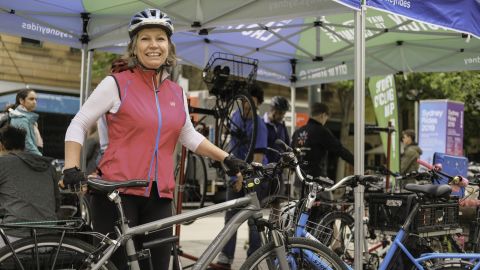While growing numbers of people in Sydney are choosing active transport, new research by the City of Sydney and C40 Women4Climate shows women aren’t participating in cycling or walking at the same rate.
The On the Go: How women travel around our city report engaged nearly 900 women across Greater Sydney to learn more about their travel choices and reveals there’s still more we can do to support women riders in our city.
Sydney has the highest rate of trips by private vehicle in Australia, with around 80% of trips made by car.
We know addressing the challenges of climate change means reducing our reliance on cars. But until now, we simply haven’t had enough understanding of the barriers women face in making the shift to active transport.
The On the Go report shows women are more likely to make complex trips with multiple stops. Around half of all journeys by women in the study involved a stop related to a caring responsibility, such as dropping the kids at school.
Managing the complexities of these trips is just one reason why women are less likely to choose riding or walking.

Women in the study were more likely to believe active travel was only for a certain type of person. They often characterised bike riding as something done by middle aged men, or inner-city residents who live close to their destination.
To tackle this perception, the On the Go report recommends setting up companion programs, with female walking buddies or riding mentors, and including more diverse, female representation when promoting active transport.
Facilities, safety and infrastructure are also important. The research highlighted concerns about arriving at the office sweaty or being unable to ride in work clothes and a lack of access to end-of-trip facilities.
Safety is the most common barrier to walking and a leading concern for bike riding overall. 64% of respondents said separated cycleways are a huge factor in helping them feel safe when riding.
For many women, active travel is only viable for part of their journey. This means active travel networks need to be planned together with public transport infrastructure, rather than as an alternative.
The report encourages councils to think of active transport as being less about footpaths and cycleways, and more about creating a network of welcoming, well-used places that create a sense of safety.
We’re using these findings to work with the NSW Government, urban planners, transport, health and sustainability professionals to create better outcomes for women’s active travel.
Published 4 June 2020



